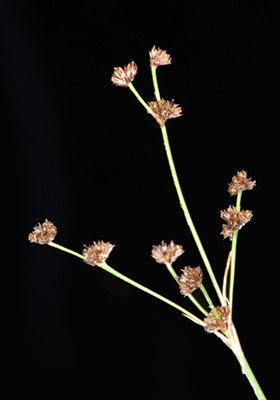Broadleaf rush
(Juncus planifolius)

Description
Juncus planifolius is a species of rush, commonly known as broadleaf rush, broad-leaved rush, or grass-leaved rush. It naturally occurs in Australia, New Zealand, Hawaii and South America. In New Zealand J. planifolius is found in open, wet ground, and can be typically found on exposed clay, beside tracks or drains. Recently J. planifolius has been introduced to the northern hemisphere. It was found in Hawai'i in 1930 and has spread to most of the islands. The species arrived in Ireland by 1973. It is now well established on Pacific coast of North America, where the plant was first collected in Oregon in 1980. The first California record was in 2008, but populations were probably well established before then. Juncus planifolius may have arrived as a contaminant in vines planted in commercial cranberry bogs, but is now spreading in native coastal bogs, where it may displace native plants. In North America, it is recognized by its unbranched stems, basal leaves with no sharp demarcation of sheath and blade, and blackish tepals. Juncus is a genus of monocotyledonous flowering plants, commonly known as rushes. It is the largest genus in the family Juncaceae, containing around 300 species. Rushes of the genus Juncus are herbaceous plants that superficially resemble grasses or sedges. They have historically received little attention from botanists; in his 1819 monograph, James Ebenezer Bicheno described the genus as "obscure and uninviting". The form of the flower differentiates rushes from grasses or sedges. The flowers of Juncus comprise five whorls of floral parts: three sepals, three petals (or, taken together, six tepals), two to six stamens (in two whorls) and a stigma with three lobes. The stems are round in cross-section, unlike those of sedges, which are typically somewhat triangular in cross-section. In Juncus section Juncotypus (formerly called Juncus subg. Genuini), which contains some of the most widespread and familiar species, the leaves are reduced to sheaths around the base of the stem and the bract subtending the inflorescence closely resembles a continuation of the stem, giving the appearance that the inflorescence is lateral. Juncus has a cosmopolitan distribution, with species found throughout the world, with the exception of Antarctica. They typically grow in cold or wet habitats, and in the tropics, are most common in montane environments.
Taxonomic tree:







